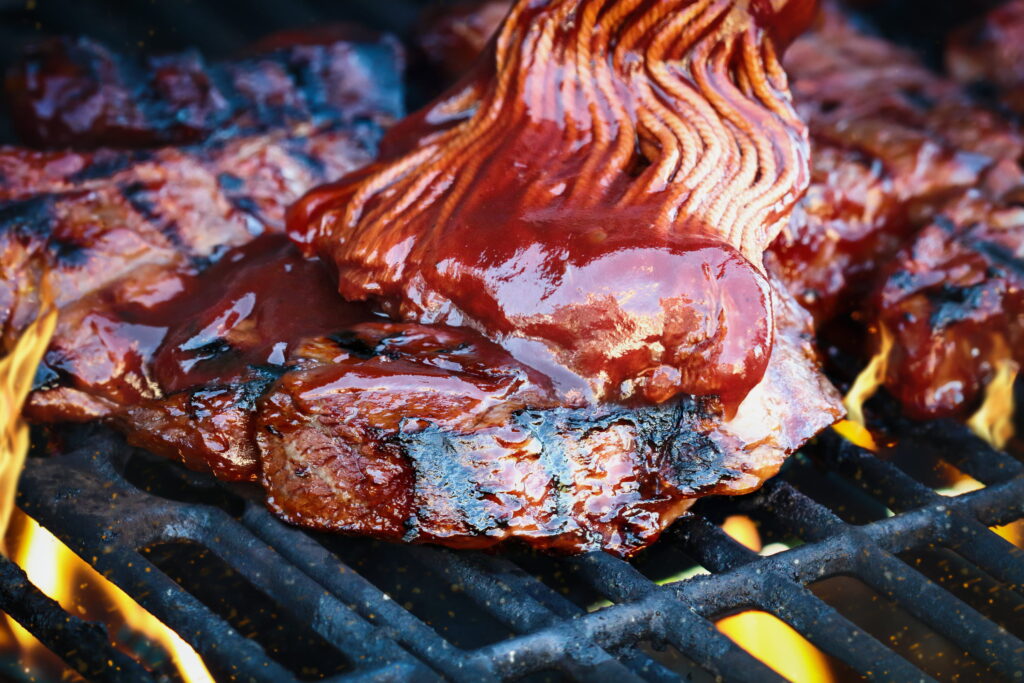The Origins of Barbecue
American food can be difficult to truly define; in many respects, one could argue that the majority of American cuisine has been created by the way of cultural exchange. Just as our nation has been built by those from other cultures, so too have many of our signature dishes arose from the flavors and techniques of their homelands. It’s little surprise that one of the most quintessentially American dishes, barbecue, arose the same way.
At its earliest origins, barbecue involved slow-cooking meat over sticks and saplings, a common activity among indigenous Americans and Caribbeans. In the Caribbean, this style of cooking was known as “barbacoa” by the indigenous Taino people, which first appeared in the writings of Spanish explorers as early as the 16th century. The Taino were known to smoke and dry meat in the sun, which could then be taken on long journeys or reconstituted with boiling water – the basis for modern-day jerky.

To keep the meat preserved, they would often add salt and aromatic spices, then wrap the meat in leaves. Once it was time to cook it, they would place the meat among hot rocks and cover it, or cook the meat on a wood lattice over the fire. Many of the spices they used (and the cooking style) evolved into what is now known as “jerk”. In 1698, a Dominican missionary named Pere Labat visited the West Indies and noticed that the native cooks used lime juice and spicy peppers to season their meat. It’s thought that this tradition came from Africa, where it was common to use citrus in a similar way.
The Hausa of West Africa also enjoyed fire-cooked meat, called “babbake,” which they would typically serve during special celebrations such as marriages or funerals. They would often half-smoke the meat during the trek from the bush to their homes, following up with spice rubs meant to help preserve the meat for the remainder of the journey and guard it against insects.

As the Spanish traveled from the Caribbean to the Americas, they brought barbacoa with them, along with vinegar and pigs. As exploration turned to colonialism, this unique way of cooking spread quickly among the Spanish, French, and English colonists, particularly in the south. Lemons and limes weren’t easy to come by in the colonies, so colonial cooks turned to using tangy vinegar as a substitute to flavor the meat and keep it succulent.
Prior to the Civil War, southern barbecue centered primarily on pork. Pigs are easy to raise and grow more quickly than cattle, which made them a more viable source of meat for the region. Additionally, when food supplies ran low, the pigs could be turned out into the forest to free-graze. Although this was convenient, it also made the pigs leaner at slaughter time, so slow-cooking the meat was also used as a way to tenderize it. In the years leading up to the Civil War, southerners ate an average of five pounds of pork for every pound of beef; their reliance on the meat even became a source of pride and patriotism, and it wasn’t uncommon for them to refuse to export the meat to the north.

By the nineteenth century, barbecue became a regular feature at church picnics, political rallies, and private parties in the south. It was noted at the time by journalist Johnathan Daniels that “Barbecue is the dish which binds together the taste of both the people of the big house and the poorest occupants of the back end of the broken-down barn.” Americans’ increasing love of barbecue grew to include simple barbecue pit restaurants that were open on the weekends for take-out – many of which were owned by black southerners. Despite racial segregation, white patrons frequented the restaurants, and they became seen as one of the first interracial meeting places.
Barbecue saw a national rise in patriotic interest during the Cold War. Despite its connections to Caribbean and African culture, barbecue was lifted up as an example of American exceptionalism and a mark of American identity. It quickly became adopted by the middle class and associated with consumerism and homeownership, cementing it as an “All-American” activity. Since the 1950s, barbecue has spread to other countries, including Australia and Germany, but it continues to be the most popular here in America.

